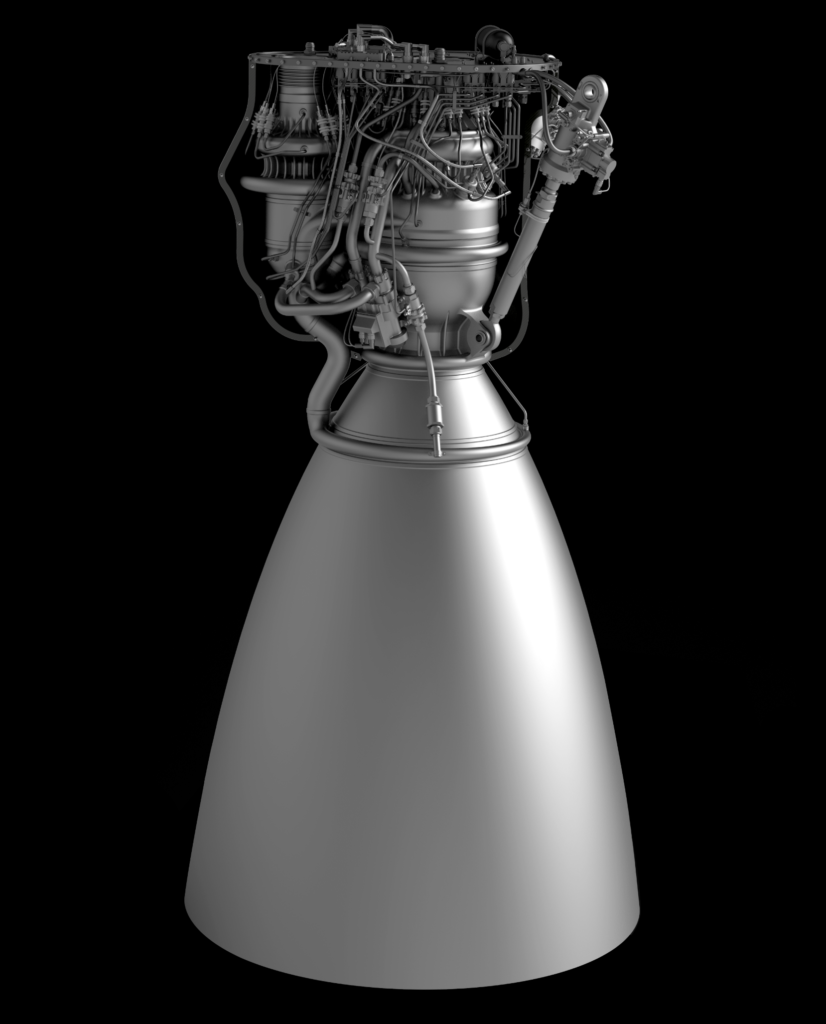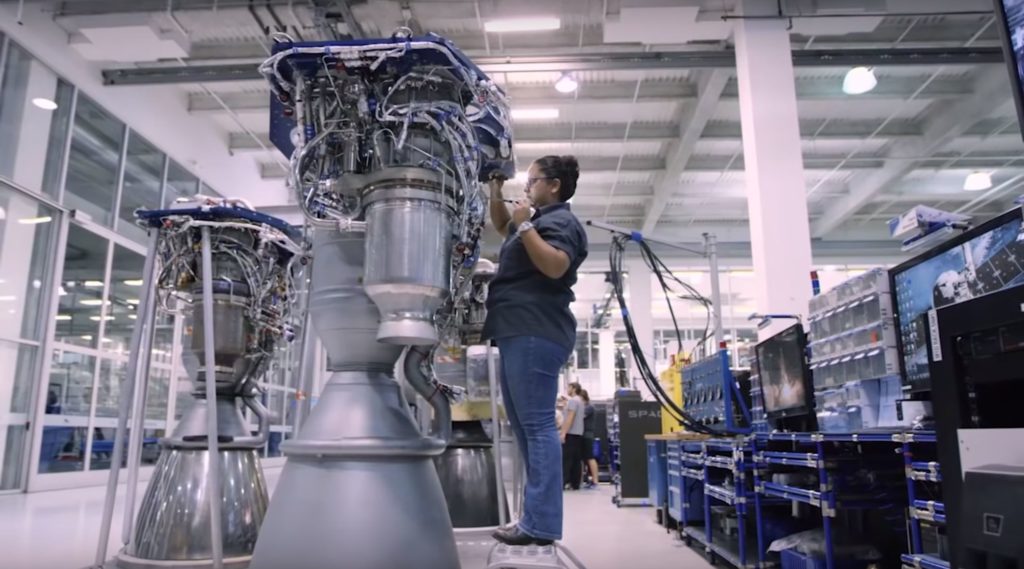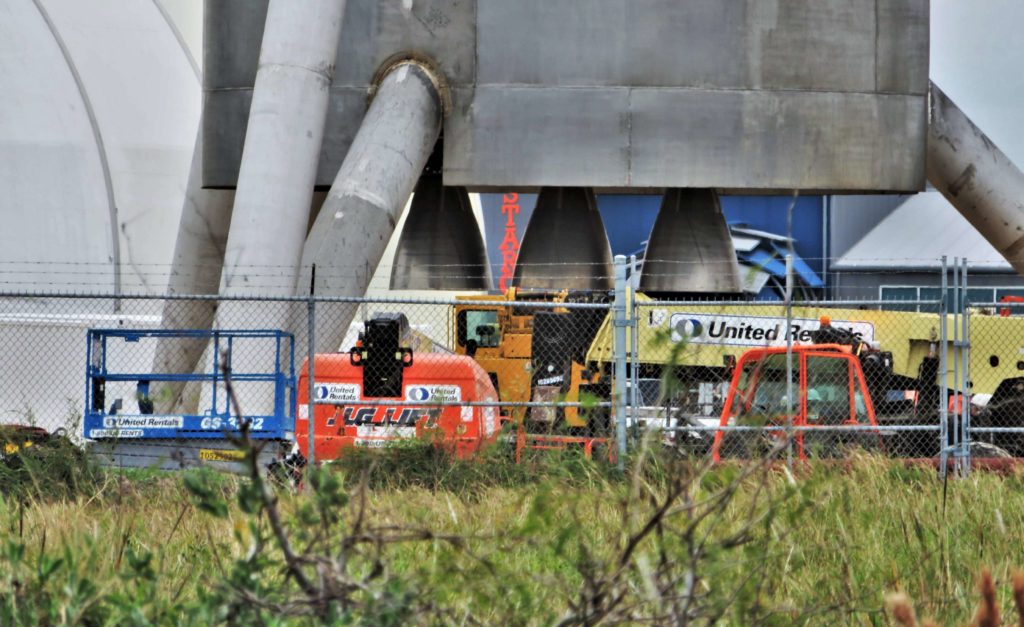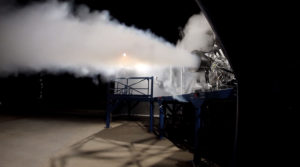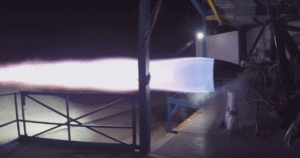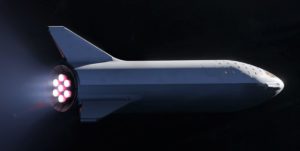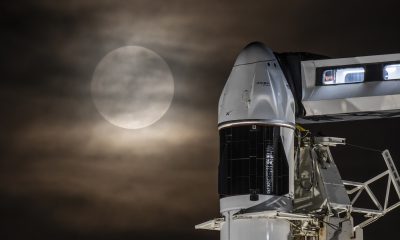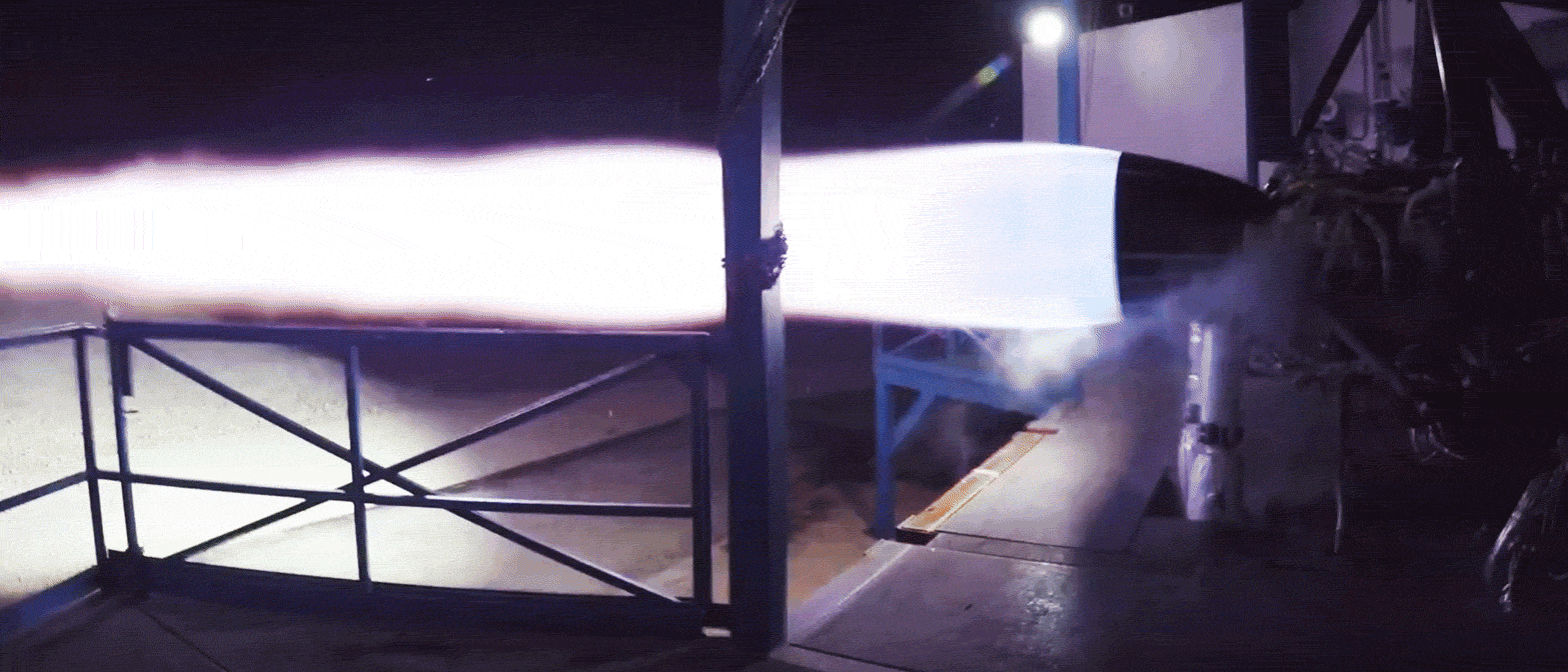

News
SpaceX sends “radically redesigned” Starship engine to Texas for hot-fire tests
SpaceX has shipped one of the first of a group of Starship engines known as Raptor, described last month by CEO Elon Musk as “radically redesigned”. A culmination of more than 24 months of prototype testing, the first flight-worthy Raptor could be ignited for the first time as early as February.
According to Musk, three of these redesigned Raptors will power the first full-scale BFR prototype, a Starship (upper stage) test article meant to conduct relatively low-altitude, low-velocity hop tests over the southern tip of Texas. Those tests could also begin next month, although a debut sometime in March or April is increasingly likely.
Engines currently on Starship hopper are a blend of Raptor development & operational parts. First hopper engine to be fired is almost finished assembly in California. Probably fires next month.
— Elon Musk (@elonmusk) January 5, 2019
Effectively designed on a blank slate, Raptor began full-scale component-level tests in 2014 at NASA’s Mississippi-based Stennis Space Center, evolving from main injector development to oxygen preburner hot-fires in 2015. Soon after Raptor’s prototype preburner design was validated at Stennis, SpaceX moved testing to its privately-owned and operated facilities in McGregor, Texas, where Raptor static fire testing has remained since.
Mach diamonds pic.twitter.com/TCX7ZGFnN0
— Elon Musk (@elonmusk) September 26, 2016
Just days before CEO Elon Musk was scheduled to reveal SpaceX’s next-generation rocket (BFR, formerly known as the Interplanetary Transport System or ITS) in September 2016, he announced in a tweet that propulsion engineers and technicians had successful hot-fired an integrated Raptor prototype – albeit subscale – for the first time ever. Just 12 months later, Musk once again took to the stage to announce an update to BFR’s design, while also revealing that prototype Raptor engines had already completed more than 1200 seconds (20 minutes) of cumulative hot-fire tests, an extremely aggressive and encouraging rate of progress for such a new engine.
SpaceX has completed over 1,200 seconds of firing across 42 main Raptor engine tests. pic.twitter.com/EhxbPjd8Cj
— SpaceX (@SpaceX) September 29, 2017
Although Raptor undoubtedly borrows heavily from much of the same expertise that designed Merlin 1 and operated and improved it for years, that is roughly where the similarities between Raptor and M1D end. M1D, powered by refined kerosene (RP-1) and liquid oxygen, uses a combustion cycle (gas-generator) that is relatively simple and reliable at the cost of engine efficiency, although SpaceX propulsion expertise still managed to give M1D the highest thrust-to-weight ratio of any liquid rocket engine ever flown. Still, measured by ISP (instantaneous specific impulse), M1D’s inefficient kerolox gas-generator cycle ultimately means that the engine simply can’t compete with the performance of engines with more efficient propellants and combustion cycles.
While SpaceX’s Falcon 9 and Heavy rockets – powered by Merlin 1D and Merlin Vacuum – are more than adequate in and around Earth orbit, a far more efficient engine was needed for the company to enable the sort of interplanetary colonization Musk had in mind when he created SpaceX. Raptor was the answer. Ultimately settling on liquid methane and oxygen (methalox) as the propellant and a full-flow staged-combustion (FFSC) cycle, Raptor was designed to be extraordinarily reliable and efficient in order to safely power a spacecraft (BFS/Starship) meant to ferry dozens or hundreds of people to and from Mars.
- The only official render of Raptor, published by SpaceX in September 2016. The Raptor departing Hawthorne in Jan ’19 looked reasonably similar. (SpaceX)
- SpaceX technicians wrench on Merlin 1D and Merlin Vacuum engines. Raptor was apparently dramatically larger in person. (SpaceX)
- Starhopper’s Raptors feature a very distinct seam and second curve, indicative of a dual-bell nozzle. (NASASpaceflight /u/bocachicagal)
Raptor enters a new era
For all the extensive and invaluable testing SpaceX has done with a series of prototype Raptor engines, the engines tested were subscale versions with around 30% the thrust of the c. 2016 Raptor and around 40-50% of the updated c. 2017 iteration, producing almost the same amount of thrust as Merlin 1D (914 kN to Raptor’s ~1000 kN). In September 2018, Musk described Raptor as an “approximately…200-ton (~2000 kN) thrust engine” that would eventually operate with a chamber pressure as high as 300 bar (an extraordinary ~4400 psi), requiring at least one of the FFSC engine’s two preburners (used to power separate turbopumps) to operate at a truly terrifying ~810 bar (nearly 12,000 psi).
Conveniently stood beside a Merlin 1D engine also ready for hot-fire acceptance testing, the Raptor engine spotted departing SpaceX’s Hawthorne, CA factory last week was reportedly immense in person, towering over an M1D engine. Raptor also featured a mass of spaghetti-like plumbing (complexity necessary for its advanced combustion cycle), with a significant fraction of the metallic pipes and tubes displaying mirror-like finishes. Most notable was an obvious secondary preburner/turbopump stack and the lack of any exhaust port, whereas M1D relies on a single turbopump and exhausts the gases used to power it. Raptor’s full-flow staged-combustion cycle uses separate oxygen and methane preburners to power separate turbopumps, significantly improving mass flow rate and smoothing out combustion mixing.
- SpaceX’s current Texas facilities feature a test stand for Raptor, the engine intended to power BFR and BFS to Mars. (SpaceX)
- SpaceX’s subscale Raptor engine has completed more than 1200 seconds of testing in less than two years. (SpaceX)
- A gif of Raptor throttling over the course of a 90+ second static-fire test in McGregor, Texas. (SpaceX)
- A September 2018 render of Starship (then BFS) shows one of the vehicle’s two hinged wings/fins/legs. (SpaceX)
Unlike all previous hot-fired Raptors, those shipping now to McGregor, Texas are expected to be the first completed engines with a finalized design, arrived at only after a period of extensive testing and iterative improvement. They also appear to be full-scale, meaning that the test bays dedicated to Raptor will likely need to be upgraded (if they haven’t been already) to support a two- or threefold increase in maximum thrust.
Yes. Radically redesigned Raptor ready to fire next month.
— Elon Musk (@elonmusk) December 22, 2018
SpaceX’s Starship hopper will need three finalized engines, meaning that the Raptor now in McGregor, Texas may not have been the first to arrive. Nevertheless, the shipment of full-scale hardware is always an extremely encouraging milestone for any advanced technology development program, while also foreshadowing the first imminent static-fires of the “radcally redesigned” rocket engine. With hardware now at the test site before January is out, a February test debut – one month behind a January debut teased by Elon Musk last December – is not out of the question.
Elon Musk
Tesla reveals it is using AI to make factories more sustainable: here’s how
Tesla is using AI in its Gigafactory Nevada factory to improve HVAC efficiency.

Tesla has revealed in its Extended Impact Report for 2024 that it is using Artificial Intelligence (AI) to enable its factories to be more sustainable. One example it used was its achievement of managing “the majority of the HVAC infrastructure at Gigafactory Nevada is now AI-controlled” last year.
In a commitment to becoming more efficient and making its production as eco-friendly as possible, Tesla has been working for years to find solutions to reduce energy consumption in its factories.
For example, in 2023, Tesla implemented optimization controls in the plastics and paint shops located at Gigafactory Texas, which increased the efficiency of natural gas consumption. Tesla plans to phase out natural gas use across its factories eventually, but for now, it prioritizes work to reduce emissions from that energy source specifically.
It also uses Hygrometric Control Logic for Air Handling Units at Giafactory Berlin, resulting in 17,000 MWh in energy savings each year. At Gigafactory Nevada, Tesla saves 9.5 GWh of energy through the use of N-Methylpyrrolidone refineries when extracting critical raw material.
Perhaps the most interesting way Tesla is conserving energy is through the use of AI at Gigafactory Nevada, as it describes its use of AI to reduce energy demand:
“In 2023, AI Control for HVAC was expanded from Nevada and Texas to now include our Berlin-Brandenburg and Fremont factories. AI Control policy enables HVAC systems within each factory to work together to process sensor data, model factory dynamics, and apply control actions that safely minimize the energy required to support production. In 2024, this system achieved two milestones: the majority of HVAC infrastructure at Gigafactory Nevada is now AI-controlled, reducing fan and thermal energy demand; and the AI algorithm was extended to manage entire chiller plants, creating a closed-loop control system that optimizes both chilled water consumption and the energy required for its generation, all while maintaining factory conditions.”
Tesla utilizes AI Control “primarily on systems that heat or cool critical factory production spaces and equipment.” AI Control communicates with the preexisting standard control logic of each system, and any issues can be resolved by quickly reverting back to standard control. There were none in 2024.
Tesla says that it is utilizing AI to drive impact at its factories, and it has proven to be a valuable tool in reducing energy consumption at one of its facilities.
Elon Musk
Tesla analysts believe Musk and Trump feud will pass
Tesla CEO Elon Musk and U.S. President Donald Trump’s feud shall pass, several bulls say.

Tesla analysts are breaking down the current feud between CEO Elon Musk and U.S. President Donald Trump, as the two continue to disagree on the “Big Beautiful Bill” and its impact on the country’s national debt.
Musk, who headed the Department of Government Efficiency (DOGE) under the Trump Administration, left his post in May. Soon thereafter, he and President Trump entered a very public and verbal disagreement, where things turned sour. They reconciled to an extent, and things seemed to be in the past.
However, the second disagreement between the two started on Monday, as Musk continued to push back on the “Big Beautiful Bill” that the Trump administration is attempting to sign into law. It would, by Musk’s estimation, increase spending and reverse the work DOGE did to trim the deficit.
Every member of Congress who campaigned on reducing government spending and then immediately voted for the biggest debt increase in history should hang their head in shame!
And they will lose their primary next year if it is the last thing I do on this Earth.
— Elon Musk (@elonmusk) June 30, 2025
President Trump has hinted that DOGE could be “the monster” that “eats Elon,” threatening to end the subsidies that SpaceX and Tesla receive. Musk has not been opposed to ending government subsidies for companies, including his own, as long as they are all abolished.
How Tesla could benefit from the ‘Big Beautiful Bill’ that axes EV subsidies
Despite this contentious back-and-forth between the two, analysts are sharing their opinions now, and a few of the more bullish Tesla observers are convinced that this feud will pass, Trump and Musk will resolve their differences as they have before, and things will return to normal.
ARK Invest’s Cathie Wood said this morning that the feud between Musk and Trump is another example of “this too shall pass:”
BREAKING: CATHIE WOOD SAYS — ELON AND TRUMP FEUD “WILL PASS” 👀 $TSLA
She remains bullish ! pic.twitter.com/w5rW2gfCkx
— TheSonOfWalkley (@TheSonOfWalkley) July 1, 2025
Additionally, Wedbush’s Dan Ives, in a note to investors this morning, said that the situation “will settle:”
“We believe this situation will settle and at the end of the day Musk needs Trump and Trump needs Musk given the AI Arms Race going on between the US and China. The jabs between Musk and Trump will continue as the Budget rolls through Congress but Tesla investors want Musk to focus on driving Tesla and stop this political angle…which has turned into a life of its own in a roller coaster ride since the November elections.”
Tesla shares are down about 5 percent at 3:10 p.m. on the East Coast.
Elon Musk
Tesla scrambles after Musk sidekick exit, CEO takes over sales
Tesla CEO Elon Musk is reportedly overseeing sales in North America and Europe, Bloomberg reports.

Tesla scrambled its executives around following the exit of CEO Elon Musk’s sidekick last week, Omead Afshar. Afshar was relieved of his duties as Head of Sales for both North America and Europe.
Bloomberg is reporting that Musk is now overseeing both regions for sales, according to sources familiar with the matter. Afshar left the company last week, likely due to slow sales in both markets, ending a seven-year term with the electric automaker.
Tesla’s Omead Afshar, known as Elon Musk’s right-hand man, leaves company: reports
Afshar was promoted to the role late last year as Musk was becoming more involved in the road to the White House with President Donald Trump.
Afshar, whose LinkedIn account stated he was working within the “Office of the CEO,” was known as Musk’s right-hand man for years.
Additionally, Tom Zhu, currently the Senior Vice President of Automotive at Tesla, will oversee sales in Asia, according to the report.
It is a scramble by Tesla to get the company’s proven executives over the pain points the automaker has found halfway through the year. Sales are looking to be close to the 1.8 million vehicles the company delivered in both of the past two years.
Tesla is pivoting to pay more attention to the struggling automotive sales that it has felt over the past six months. Although it is still performing well and is the best-selling EV maker by a long way, it is struggling to find growth despite redesigning its vehicles and launching new tech and improvements within them.
The company is also looking to focus more on its deployment of autonomous tech, especially as it recently launched its Robotaxi platform in Austin just over a week ago.
However, while this is the long-term catalyst for Tesla, sales still need some work, and it appears the company’s strategy is to put its biggest guns on its biggest problems.
-

 Elon Musk1 day ago
Elon Musk1 day agoTesla investors will be shocked by Jim Cramer’s latest assessment
-

 News6 days ago
News6 days agoTesla Robotaxi’s biggest challenge seems to be this one thing
-

 News2 weeks ago
News2 weeks agoTesla’s Grok integration will be more realistic with this cool feature
-

 Elon Musk2 weeks ago
Elon Musk2 weeks agoElon Musk slams Bloomberg’s shocking xAI cash burn claims
-

 News2 weeks ago
News2 weeks agoTesla China roars back with highest vehicle registrations this Q2 so far
-

 News2 weeks ago
News2 weeks agoTexas lawmakers urge Tesla to delay Austin robotaxi launch to September
-

 News2 weeks ago
News2 weeks agoTesla dominates Cars.com’s Made in America Index with clean sweep
-

 Elon Musk1 week ago
Elon Musk1 week agoFirst Look at Tesla’s Robotaxi App: features, design, and more

